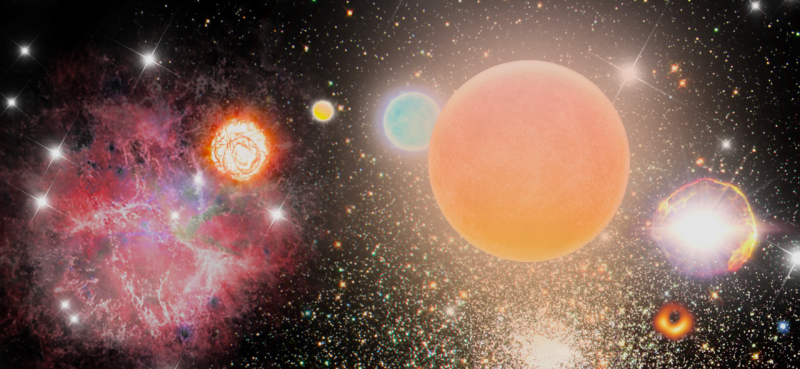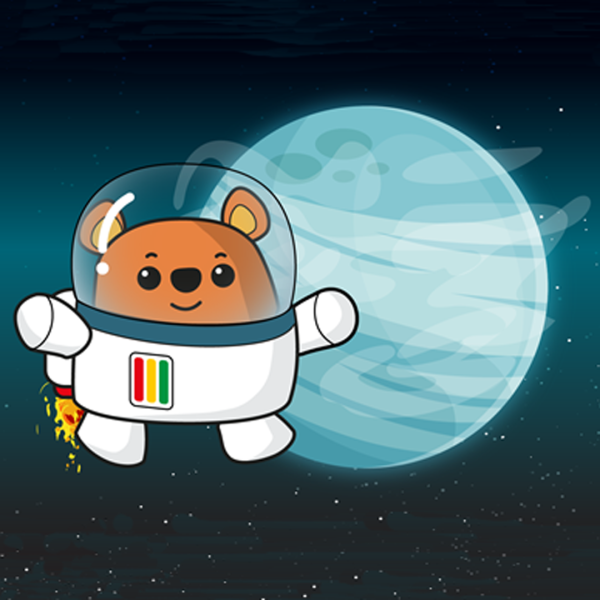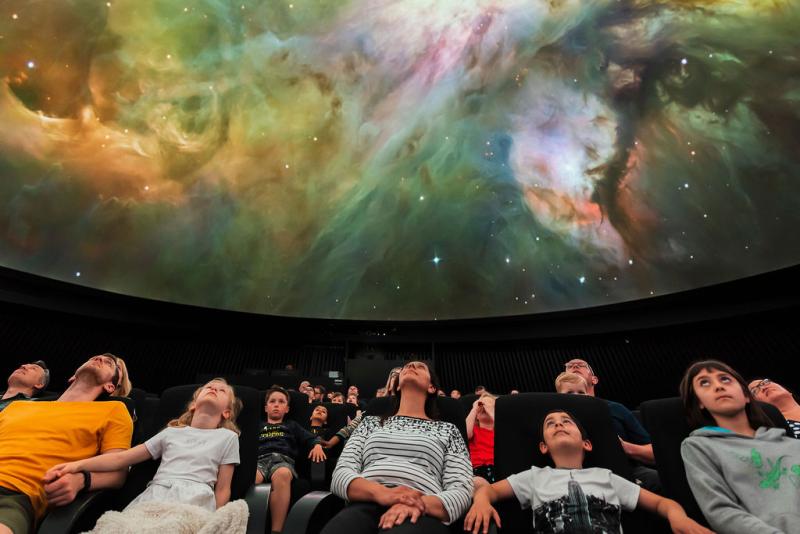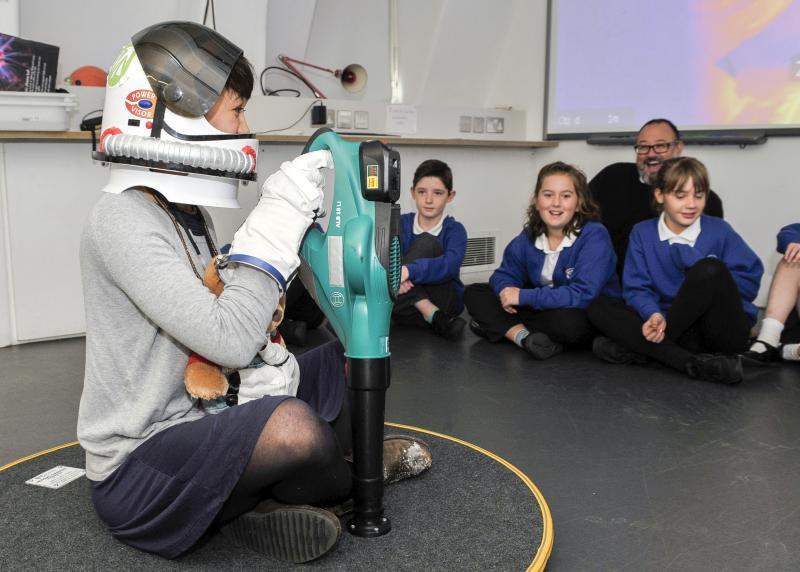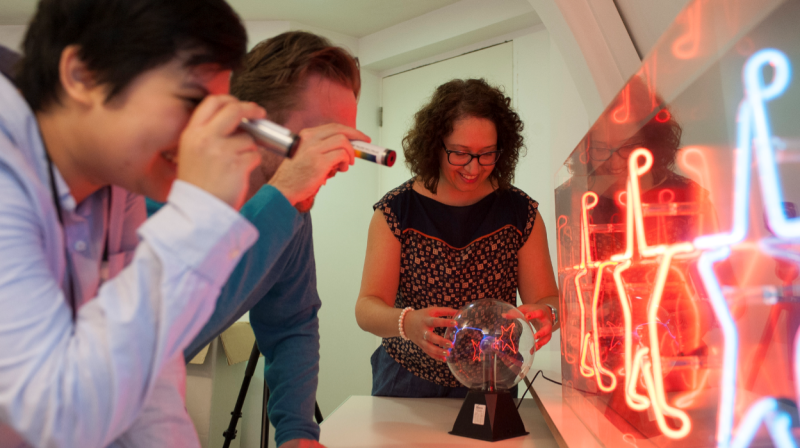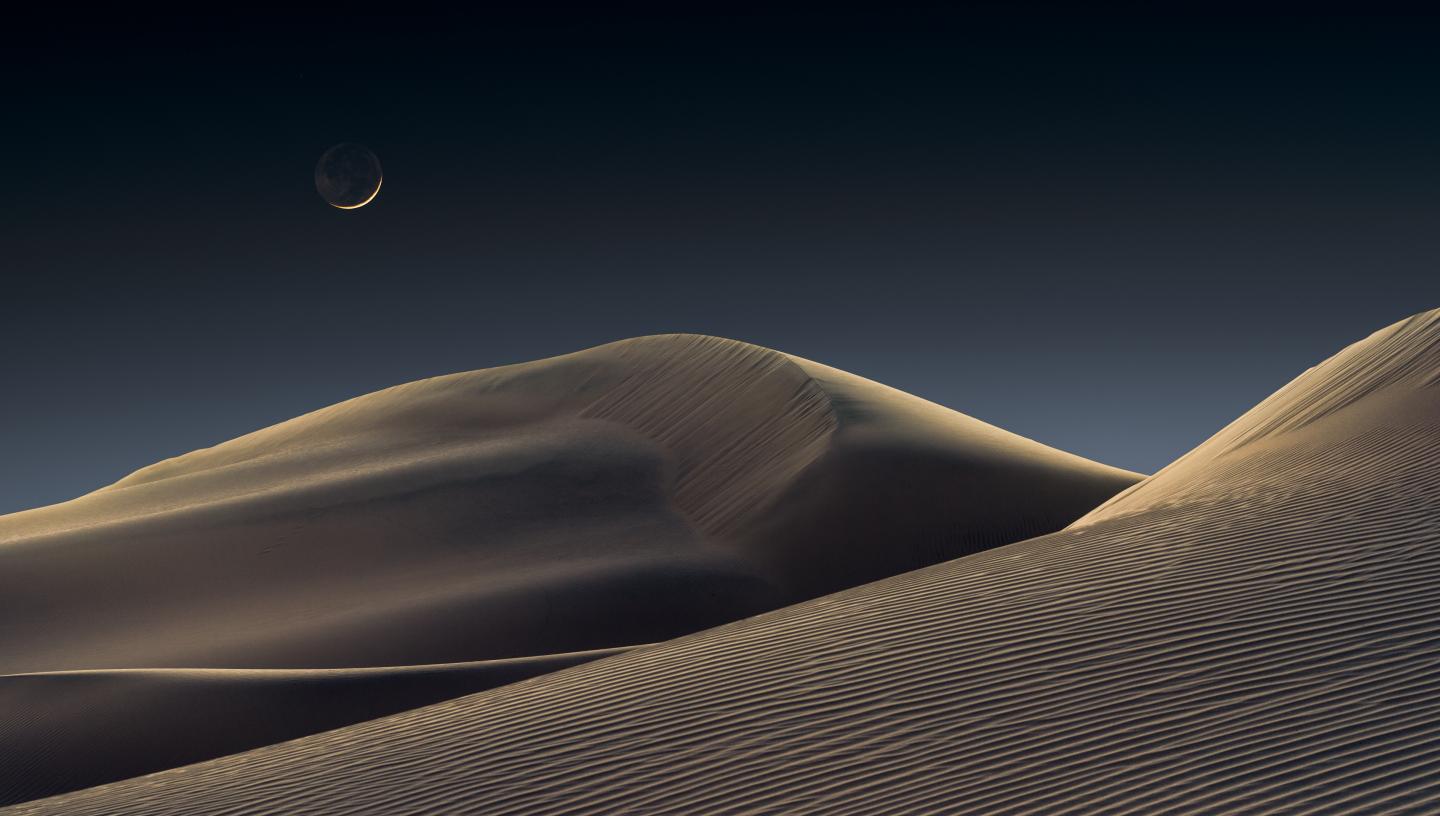
Discover what to see in the night sky in July 2022, including the Hercules Globular Cluster and the Delta Aquariids meteor shower.
Top 3 things to see in the night sky in July
- Throughout the month - Explore the stars of M13
- 13 July - Spot the supermoon
- 30 July - It's the peak of the Delta Aquariids meteor shower
(Details given are for London and may vary for other parts of the UK)
Look Up! Podcast
Subscribe and listen to the Royal Observatory Greenwich's podcast Look Up! As well as taking you through what to see in the night sky each month, Royal Observatory Greenwich astronomers pick a topic to talk about.
For July they're talking about NASA starting a study on Unidentified Aerial Phenomena (UAPs), and they're giving us an update on the Europa Clipper mission. Have a listen below, then vote for your favourite story from the podcast on our Twitter poll (@ROGAstronomers) during the first week of July.
Our podcast is available on iTunes and SoundCloud
Astronomy in July 2022: key events and what to see
Throughout the month: See if you can spot noctilucent clouds
We’re currently in the middle of the season for “Noctilucent clouds”, or night-luminous clouds; pale blue, silvery clouds that seem to glow during the night. These are seen during summers, when the Sun doesn’t set too far below the horizon at night, at latitudes between 45 and 80 degrees north or south. In these regions, sunlight from beyond the horizon reflects off of the undersides of extremely high-altitude ice clouds found within the mesosphere, a layer in the upper atmosphere, giving them their strange glow.
This is a rare phenomenon – these clouds only form during summers, when the mesosphere becomes cold enough to allow ice to form on suspended meteor particles floating in the atmosphere. To see these, you don’t need any equipment. Just look northwards, where the sky is brightest, an hour or two after sunset or before sunrise. These are hard to predict though; if conditions are good, you should see streaking clouds low on the horizon. But, if you’re very lucky, you could possibly see the whole sky lit up from east to west.
Throughout the month: Explore the stars of M13
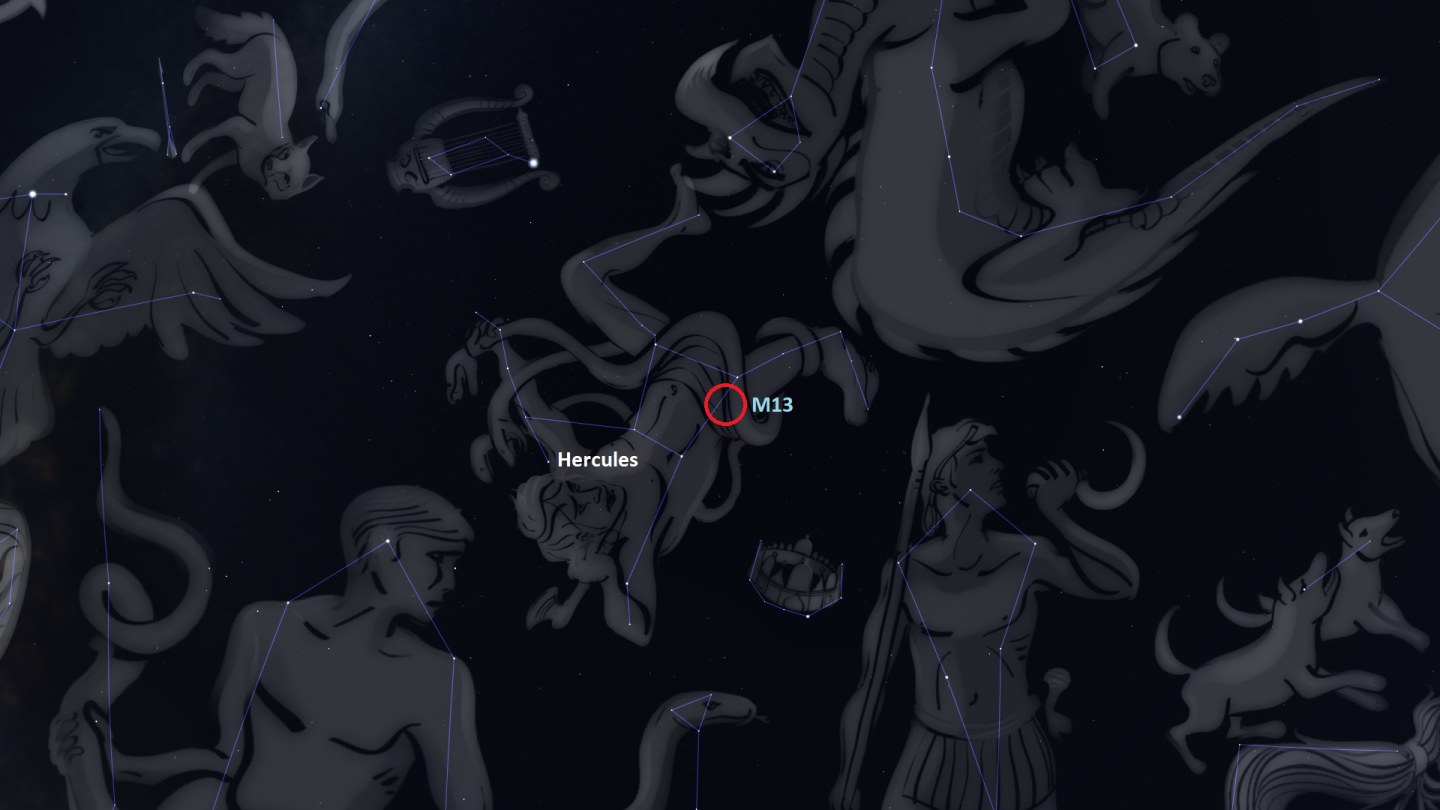
Another great target to see this month is Messier 13, the Hercules globular cluster, one of the best clusters to see in the northern hemisphere. Discovered by Edmond Halley in 1714, this cluster is located 25,000 lightyears away and contains approximately 500,000 stars. Its high altitude at night makes it an excellent target for observation this time of the year. To find it, look towards the western side of the Keystone asterism of the constellation Hercules.
This cluster is just about visible with the naked eye, but better equipment would reward you with much improved views. A good pair of binoculars will reveal a fuzzy ball with a well-defined centre, but telescopes with apertures between 4 to 8 inches will allow you to resolve the outer stars of the cluster. With a larger telescope, you should be able to see three dark lanes that form the Y-shaped “propeller”. This feature is an optical illusion – there are just fewer stars along our line of sight in this region, making it appear darker.
Throughout the month: Find the rival of Mars
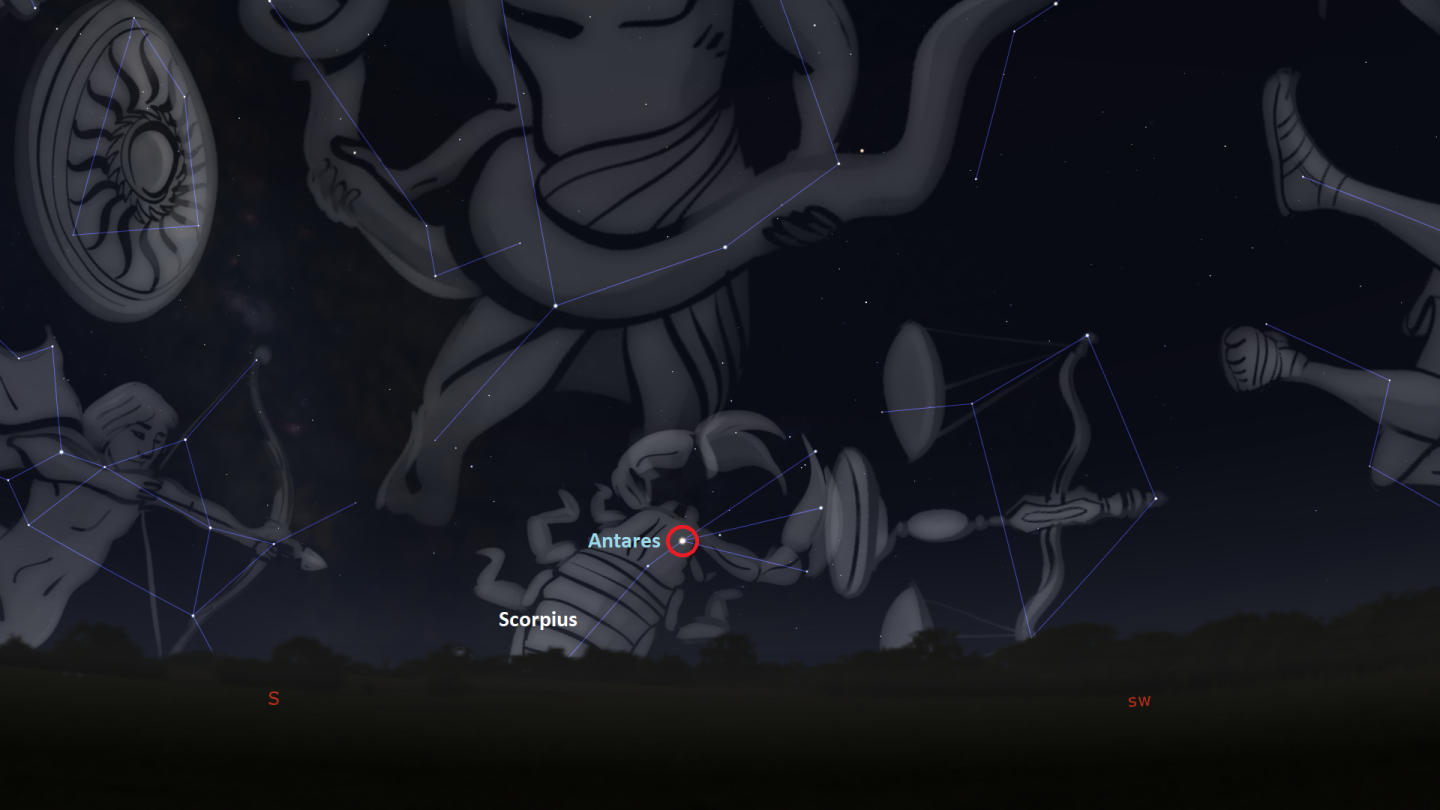
The summer months provide the best observing time for those in the northern hemisphere to spot the star Antares in the constellation Scorpius. Antares’ name is Greek for “Rival of Ares”, Ares being the Greek equivalent of Mars. Being a very bright star with a deep red hue, we can see why the comparisons to Mars were made.
Antares is in fact a red supergiant, a massive star that is nearing the end of its life. It’s 700 times larger than the Sun, meaning that if it were to replace the Sun in our Solar System, it would even swallow up its rival Mars. As it's nearing the end of its life, Antares is expected to go supernova within the next few million years (which would be an incredible thing to look up for).
13 July: Keep an eye out for the supermoon

We have another supermoon this month which will occur on the 13th. A supermoon occurs when the Moon is at its closest point along its orbit to the Earth, at the same time that it reaches its full moon phase.
According to the native American system, the July full moon is named the Buck Moon, as it indicates the time when male deer shed and regrow their antlers, so this month's supermoon could be called the Super Buck Moon.
30 July: It's the peak of the Delta Aquariids meteor shower

Towards the end of the month, on the 30th, the Southern Delta Aquariid meteor shower will reach its peak. The Aquariids leave 'trains', persistent glowing trails from the fireball, that linger in the sky for several moments.
Look towards the south to find the radiant of the shower within its namesake constellation, Aquarius. The best time to view these meteors would be just before dawn when the radiant reaches its highest altitude at 3am. From London, you should expect to see 9 meteors an hour.
Read more about the Delta Aquariid meteor shower
Southern Hemisphere: Throughout the month - Enjoy the sights of M4
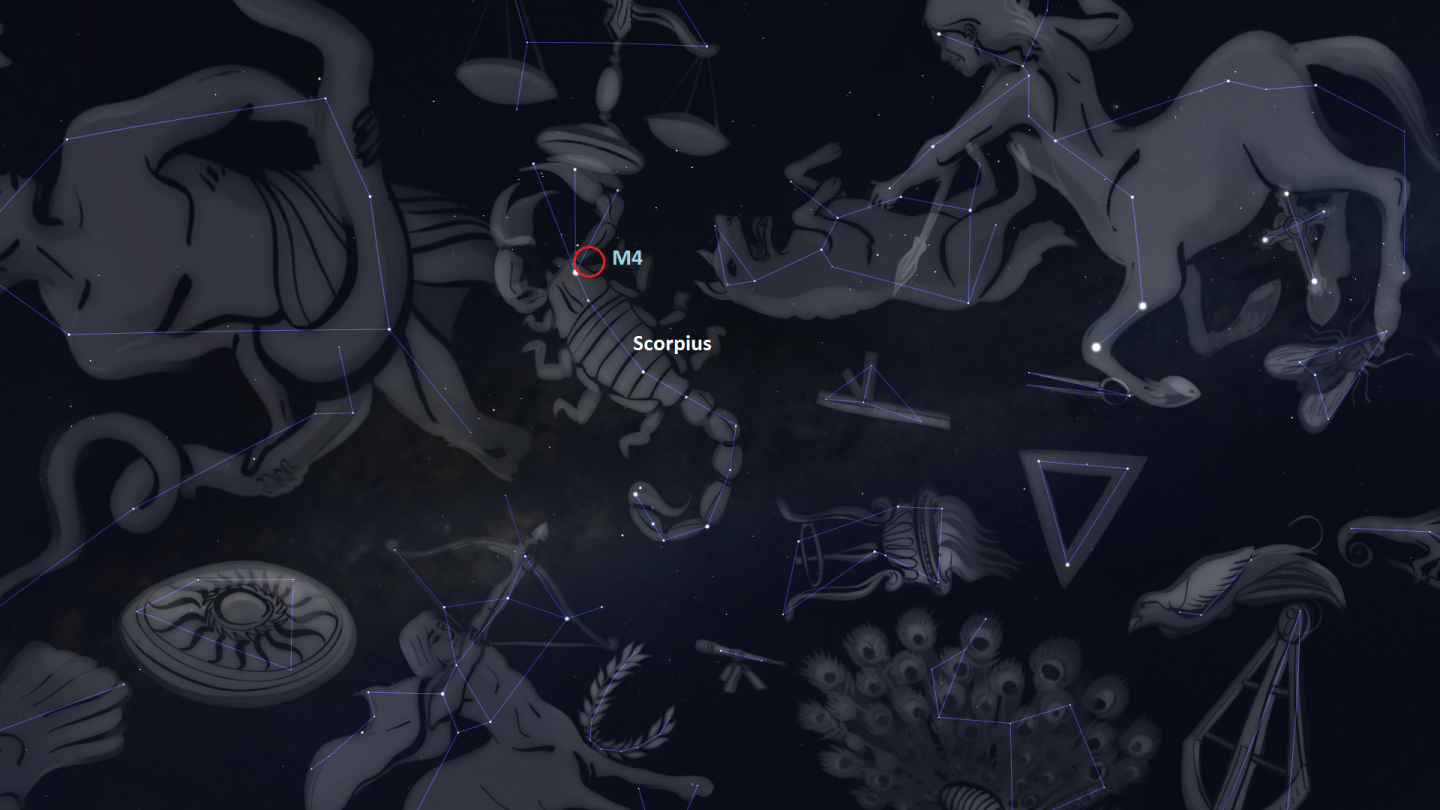
For those in the southern hemisphere, we recommend taking a look at Messier 4, the first globular cluster to have its individual stars resolved (by Charles Messier). With its high altitude and dark winter skies, this is a very good time of the year to view this cluster. Despite being smaller than M13, this cluster is very easy to see as it's one of the closest clusters to us at only 7200 lightyears away (compared to M13’s 25000).
M4 is bright enough to be seen by the naked eye and it is easy to find, lying close to the red heart of the Scorpion, the bright star Antares. With the naked eye it’ll look like a star, perhaps slightly fuzzy, but with a small telescope you’ll start to see the cluster members. Larger apertures will even allow you to see a bar structure at the heart of the cluster. It is possible to view Messier 4 back in the Northern hemisphere if you look towards the south, where it will appear low on the horizon.
The Moon's phases this month
- 7 July: first quarter moon (3:14 am)
- 13 July: full moon (7:38 pm)
- 20 July: last quarter moon (3:19 pm)
- 28 July: new moon (6:55 pm)
If you're a fan of the Moon, then see the winning and shortlisted images in the 'Our Moon' category of the 2021 Astronomy Photographer of the Year competition, all featured in an exhibition at the National Maritime Museum.
Stargazing Tips
- When looking at faint objects such as stars, nebulae, the Milky Way and other galaxies it is important to allow your eyes to adapt to the dark – so that you can achieve better night vision.
- Allow 15 minutes for your eyes to become sensitive in the dark and remember not to look at your mobile phone or any other bright device when stargazing.
- If you're using a star app on your phone, switch on the red night vision mode.
See our range of observing equipment
Share your pictures
This month's banner image is 'Luna Dunes' by Jeffrey Lovelace. It was the 2021 winner of the Skyscapes category in the Astronomy Photographer of the Year competition.
Do you have any images of the night sky? If so, why not share your photos via our Royal Observatory Astrophotography Facebook group.
You can also connect with us via Twitter: @ROGAstronomers
Planetarium Shows
Join us for live planetarium shows
Royal Observatory Greenwich YouTube Channel
Subscribe to our YouTube channel and join us on a journey through time and space as we explore our Universe. You'll find a selection of videos on our channel, including our Observatory Online video series in which our astronomers explore different topics in astronomy and space exploration.
Resources for teachers and students
The Royal Observatory Greenwich's learning team has also created:
- Free animated videos that answer the biggest questions in astronomy and free resources to go alongside them.
- A whole host of podcasts featuring interviews with real space scientists, astronauts and active researchers working in UK universities.
- A 'learning at home' hub which contains a suite of resources for you to use at home.


